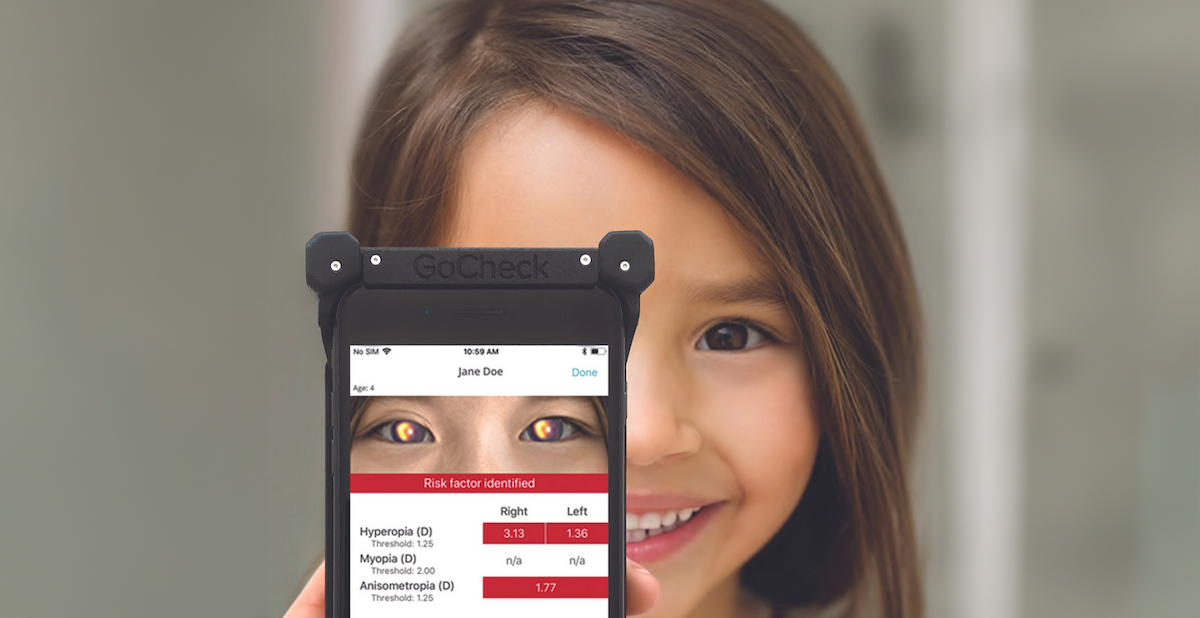

How do you know if the world is blurry to a young child?
GoCheck Kids offers the only smartphone photoscreener designed to identify amblyopia risk factors in children 1 to 6 years old.
The Importance of Pediatric Vision Photoscreening
The American Academy of Pediatrics vision screening policies recommend instrument-based screening as early as 12 months with photoscreening being the most common type. Yet, less than 40% of children age 5 and under have had their vision tested.1
Results in a Flash
With the GoCheck Kids’ photoscreener, it’s as easy as taking a photo.
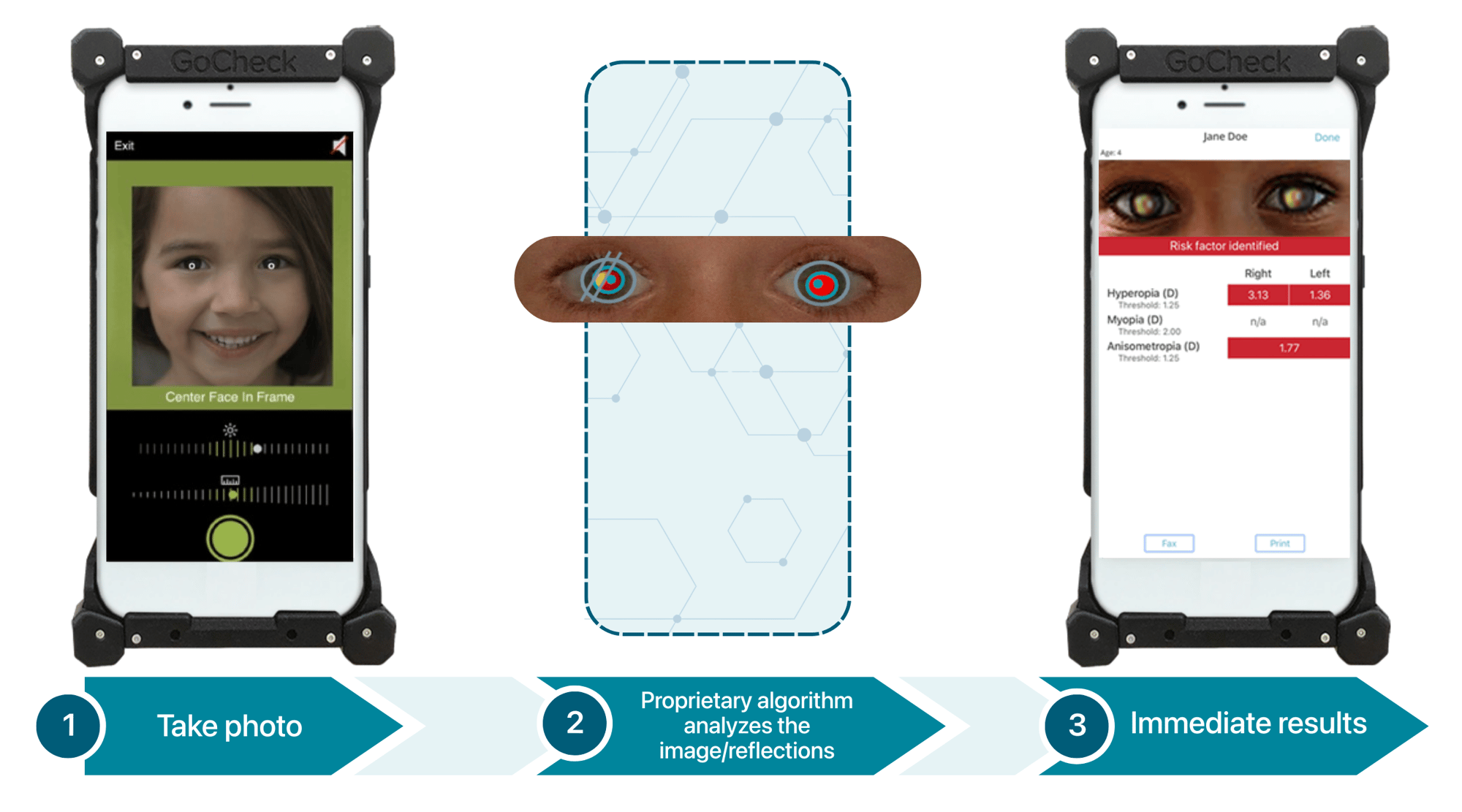
Why Use GoCheck Kids' Photoscreener?
- Clinically validated for children ages 1 to 6, our screener detects the presence of conditions that are risk factors for amblyopia
- Two-way electronic health record integration—upload patients into the app and immediately upload results to the patient record
- No capital expenditures – subscription pricing with regular software updates
- Easily fits into your workflow, saving time, improving quality of care, improving capacity for care
- Meets qualifications for 99174 and 99177 vision procedure codes
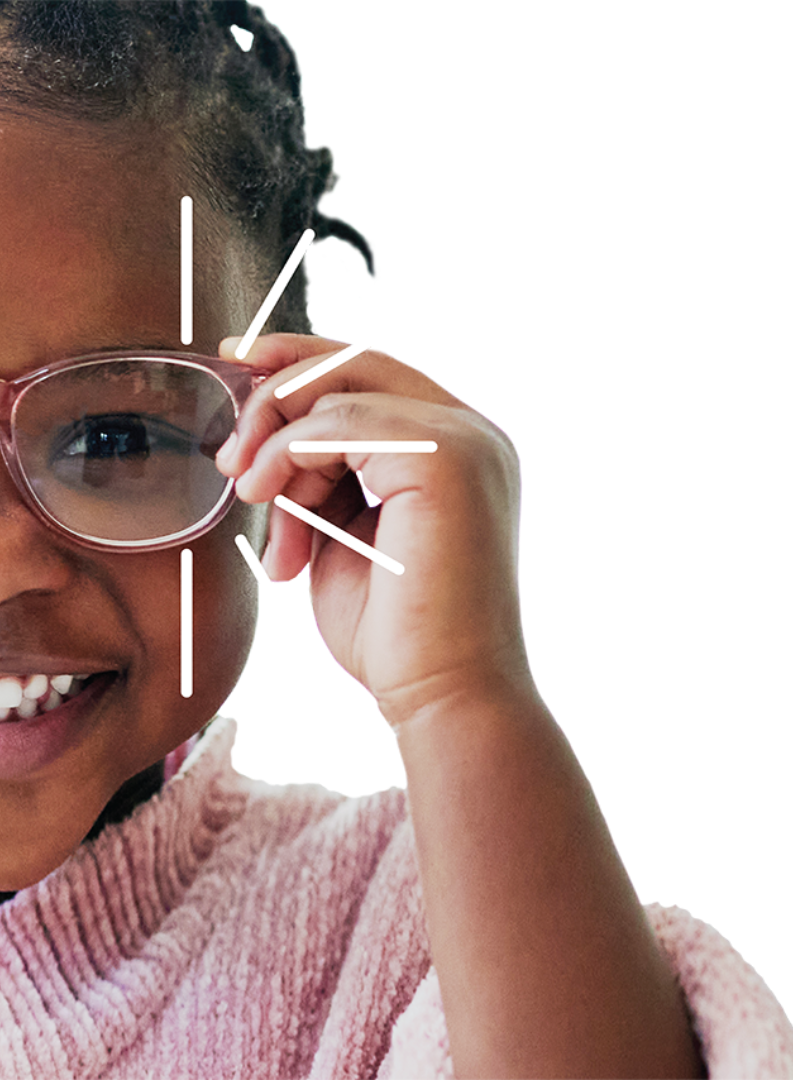
1. “Children’s Vision and Eye Health: A Snapshot of Current National Issues.” National Center for Children’s Vision and Eye Health, Prevent Blindness. https://preventblindness.org/wp-content/uploads/2020/07/Snapshot-Report-2020condensedF.pdf

Download the free eBook, “Pediatric Vision Photoscreening: An Evidence-Based Overview”
Learn about photoscreening, pediatric vision disorder prevalence, and tips for starting a photoscreening program.
MKT-DOC-335 Rev 01
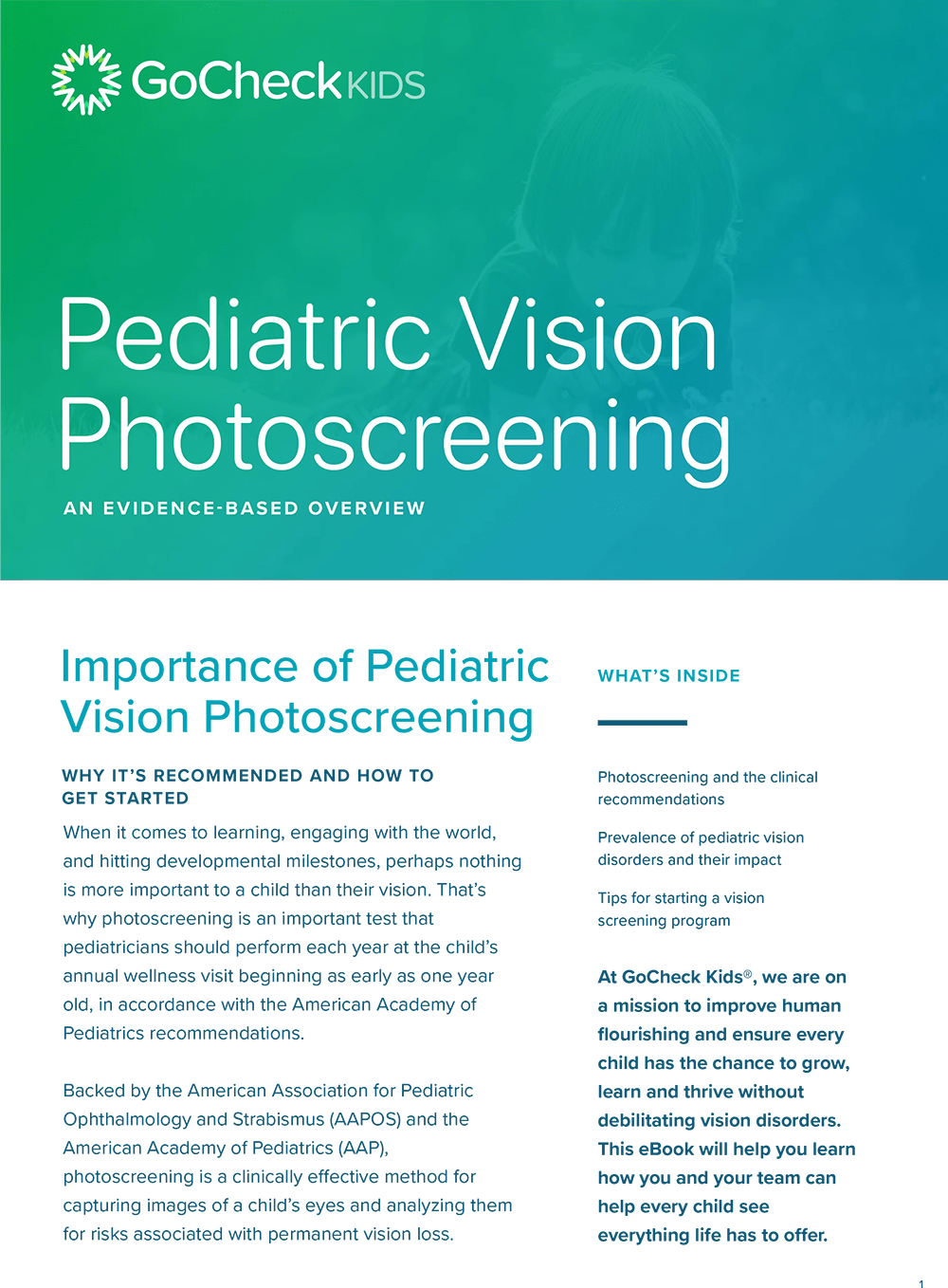
Experience GoCheck Kids For Yourself
Seeing is believing. Schedule a demo with a representative today to learn more about GoCheck Kids.
Used by Leading Pediatric Organizations





What They’re Saying About Us
“The availability of GoCheck Kids is particularly intriguing. Its photoscreening functionality efficiently detects risk factors for amblyopia in real-time. A real advantage of GoCheck Kids is that it is a mobile application and, therefore, portable, affordable, and easily accessible… For a monthly subscription, a physician is provided unlimited utilization.”
Dr. Sean P. Donahue
Chief of Pediatric Ophthalmology, Vanderbilt University Medical Center
“Children’s Vision and Eye Health: A Snapshot of Current National Issues.” National Center for Children’s Vision and Eye Health, Prevent Blindness. https://preventblindness.org/wp-content/uploads/2020/07/Snapshot-Report-2020condensedF.pdf
Curious about our other solutions?
Learn how GoCheck Kids can help your practice with additional vision and hearing screenings.